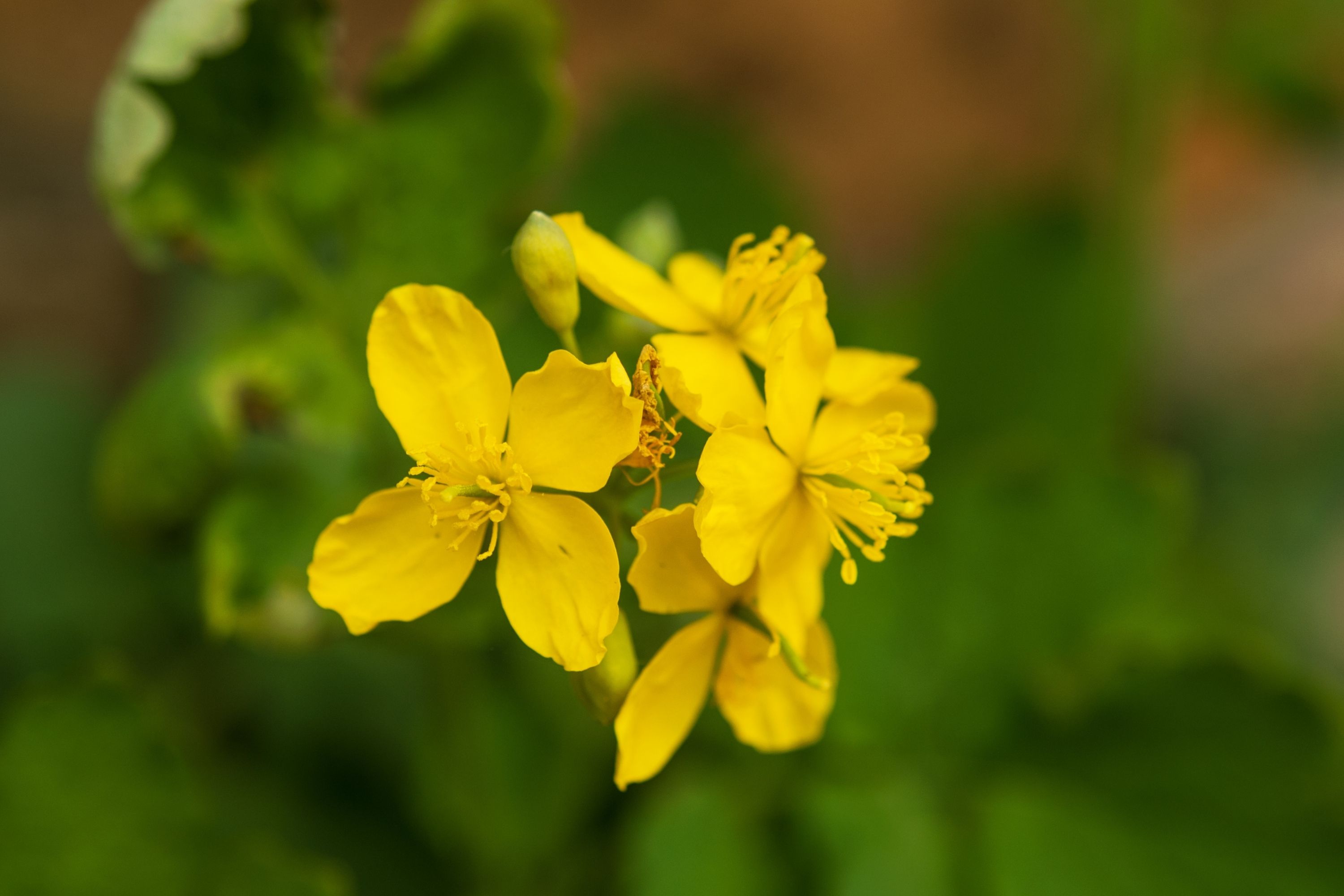Greater celandine
(Chelidonium majus)

Description
Chelidonium majus, commonly known as greater celandine or tetterwort, is a perennial herbaceous plant belonging to the poppy family Papaveraceae. The plant is native to Europe and western Asia, but now it is naturalized in many parts of the world, including North America. Greater celandine has a long history of medicinal use and was used by ancient Greeks, Romans, and Chinese to treat a variety of ailments. In this article, we will explore the taxonomy, morphology, distribution, habitat, uses, and cultivation of Chelidonium majus. Taxonomy: Chelidonium majus was first described by the Swedish botanist Carl Linnaeus in 1753 in his book Species Plantarum. The genus name Chelidonium comes from the Greek word chelidon, which means swallow, because the plant was believed to bloom when the swallows arrived. The species name majus means greater, which refers to the plant's size compared to another species in the same genus, Chelidonium minus. Morphology: Chelidonium majus is a perennial herbaceous plant that can grow up to 1 meter tall. The plant has a thick, yellowish-orange sap that oozes from the stem when it is cut. The stem is erect, branching, and pubescent. The leaves are alternate, pinnately divided, and have lobed margins. The flowers are small, yellow, and have four petals. They appear in umbels from April to September. The fruit is a cylindrical capsule that splits open when mature to release many small, brown seeds. Distribution and Habitat: Chelidonium majus is native to Europe and western Asia, but it is now naturalized in many parts of the world, including North America, South America, Africa, and Australia. It grows in a wide range of habitats, including waste ground, roadsides, woodland edges, and gardens. The plant prefers moist, well-drained soils and can tolerate partial shade. Uses: Chelidonium majus has a long history of medicinal use and was used by ancient Greeks, Romans, and Chinese to treat a variety of ailments. The plant contains alkaloids, including chelidonine, which are responsible for its medicinal properties. The sap of the plant is used externally to treat warts, corns, and other skin conditions. It is also used internally to stimulate bile production and treat liver and gallbladder disorders. However, the use of greater celandine for medicinal purposes should be supervised by a qualified healthcare professional. In addition to its medicinal uses, Chelidonium majus has some other uses as well. The plant was traditionally used to dye fabrics and eggs yellow. The plant's sap was also used as a natural ink and a remedy for eye infections. Cultivation: Chelidonium majus is an easy-to-grow plant that can be propagated by seed or division. The seeds should be sown in the spring or autumn in a well-drained soil mix. The plant prefers partial shade and regular watering. Once established, greater celandine can tolerate some drought. The plant can be divided in the spring or autumn, and the divisions can be replanted in a new location. However, the plant can be invasive, so it should be grown with caution. Conclusion: Chelidonium majus, or greater celandine, is a perennial herbaceous plant that has a long history of medicinal use. The plant is easy to grow and can be propagated by seed or division. It prefers moist, well-drained soils and can tolerate partial shade. The sap of the plant is used externally to treat skin conditions, and it is also used internally to stimulate bile production.
Taxonomic tree:







